
Posts Tagged: hungry
Leave Me Alone, Please--I'm Eating!
"Leave me alone, please--I'm eating." The monarch caterpillar feasting on the tropical milkweed, Asclepias curassavica, in Vacaville, Calif., kept doing what monarch 'cats do best--eat. She insisted on devouring the leaves as if there were no tomorrow--and today would end soon. How did we...
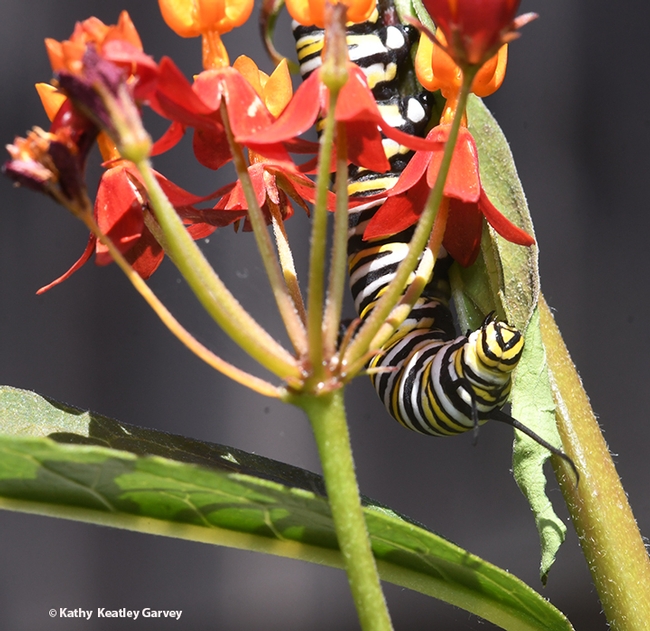
A monarch caterpillar feasting on a tropical milkweed, Asclepias curassavica, in Vacaville, Calif. (Photo by Kathy Keatley Garvey)
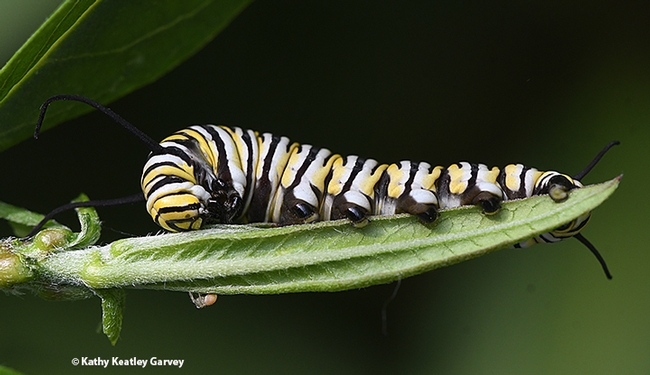
A monarch caterpillar stretches out on a leaf, binge eating. (Photo by Kathy Keatley Garvey)

Well, hello there! But move along, please. Can't you see I'm eating? (Photo by Kathy Keatley Garvey)
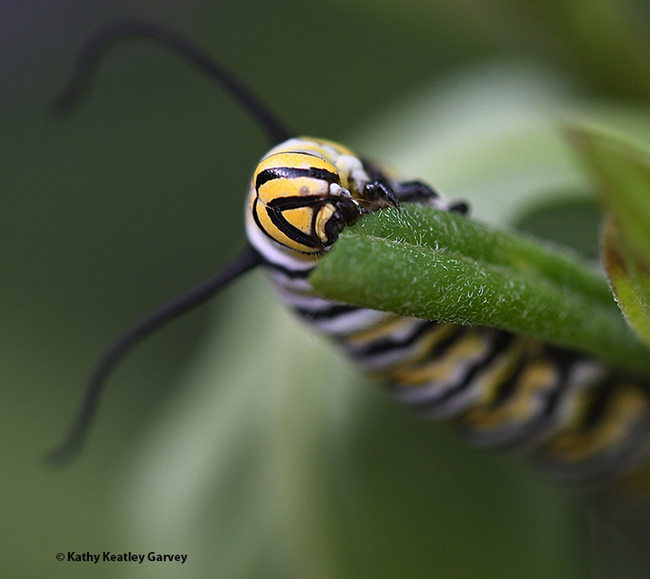
The milkweed is always greener on the other side. (Photo by Kathy Keatley Garvey)
Those Amazing Ticks: And How Hungry Ticks Work Harder to Find You
They ticked me off. Ticks can do that to you. I never think about ticks during the holiday season, but a news release from the University of Cincinnati about how “Hungry Ticks Work Harder to Find You” piqued my interest--and memories of the day our family inadvertently...
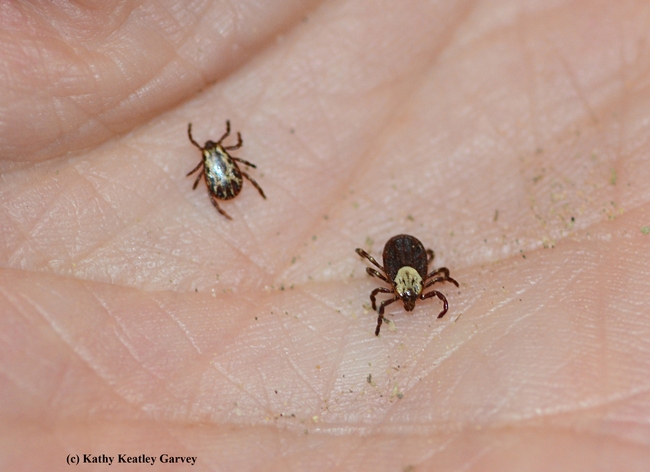
Two Dermacentor occidentalis (Pacific Coast ticks) "collected" during a Sonoma outing: male on the left and female on right, as identified by Lynn Kimsey, director of the Bohart Museum of Entomology. They are about the size of a sesame seed. (Photo by Kathy Keatley Garvey)
Alameda Master Gardeners help develop garden to feed the hungry
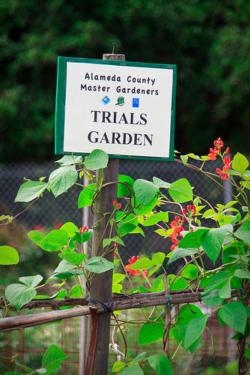
In addition, plans are in place to make the organic planting and composting operation a demonstration garden with a monthly curriculum and teaching cycles for anyone who wants to learn about gardening, the story said.
The pastor of Asbury United Methodist Church, Chuck Johnstone, suggested last year that open land behind the church could be used to grow food for the hungry. In August, Alameda County Master Gardeners Bruce Campbell and Mark Brunell and a team of volunteers prepared the soil for planting by digging down 18 inches by hand, screen-sifting the soil to remove the pebbles and rocks, and forming five 80-foot-long raised beds. In December they held a four-hour planting party.
"We're doing all this on a shoestring. We replaced a large cash outlay with a lot of (volunteer) labor," Campbell was quoted in the article.
Reporter Thomas Petty said the Master Gardeners have two simple goals for the garden:
- Use an organic market garden model. Food scraps from the food kitchen are composted and put back into the garden for fertilizer. No artificial fertilizers or pesticides are used and the group is working toward "bio-intensive" beds.
- Have a closed system in which proper crop rotation increases soil fertility. Nothing goes into the system except sun, water and compost.
The Garden of Grace blog reported that 50 heads lettuce - romaine, green and red salad bowl, red sails lettuce, and some Russian red kale leaves - 12 broccoli heads, 6 Bull's Blood beets, and 6 turnips were harvested from the garden on Easter Sunday.
